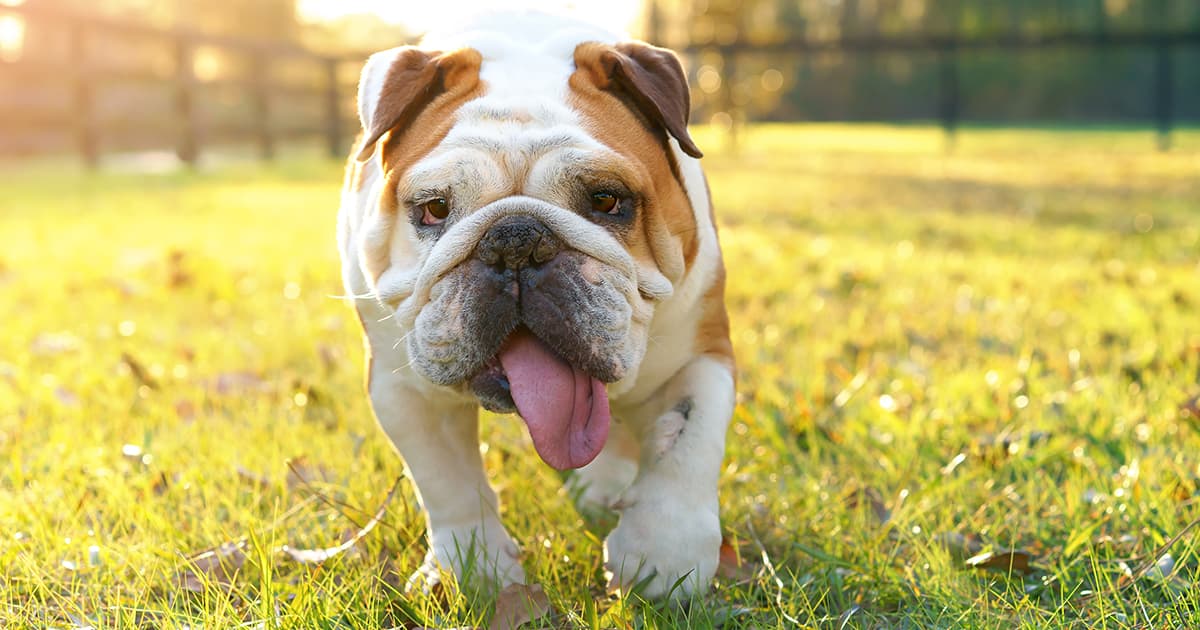Is an Overweight Dog More Likely to Suffer Heatstroke?

We have talked about obesity increasing the risk of dogs developing other health conditions like diabetes, arthritis and pancreatitis. However, one health issue that might not be so obvious is that obesity can affect a dog’s ability to cool down when they become overheated. And this puts them at a greater risk of developing heatstroke.
What Is Heatstroke?
Heatstroke is a medical emergency, so if you think your dog has heatstroke, you should seek veterinary care immediately. Heatstroke occurs when a dog’s core temperature rises from a normal range (99.5 °F to 102.5 °F) to a potentially life-threatening level of 105 °F or higher. Shock and organ damage can occur when the body’s ability to cool down is overwhelmed during heatstroke, and this can potentially lead to death.
Obesity Increases the Risk of Heatstroke
Dogs rely on their respiratory system to keep cool. Unlike people, they don’t sweat (except through some sweat glands in their footpads) — instead, they dissipate heat by panting. But if they can’t pant quickly enough or if the environmental temperature or humidity is too high, their core body temperature can rise to dangerous levels.
Medical conditions like obesity, heart disease or lung disease that make it more difficult for dogs to breathe (or pant) can predispose them to developing heatstroke. This is also the reason why brachycephalic breeds (flat-nosed breeds like English bulldogs, Boston terriers, Pekingese and pugs) and breeds prone to laryngeal paralysis (like Labradors and golden retrievers) are more at risk of heatstroke. Very old and very young dogs are also at greater risk of heatstroke because they have trouble regulating temperature.
Signs of Heatstroke
The signs of heatstroke vary depending on how long the dog was exposed to high heat and/or humidity and if they have any underlying health conditions. Heatstroke signs may include drooling, pale or red gums, vomiting, fast heart rate, collapse, seizures, staggering or wobbling when walking and loss of consciousness.
If your dog is showing signs of heatstroke, seek veterinary care immediately. If possible, cool down your dog with room-temperature water or apply wet towels before getting them into the car. Do not use ice water: it causes blood-vessel constriction which makes heat dissipation more difficult. Cool down your dog gradually, and drive to the veterinary clinic with the windows down or the air conditioning on.
Heatstroke Prevention
We all know that dogs should never be left in cars and that cracking the window doesn’t help at all. On a 75 °F day, the temperature inside a car can heat to 110 °F in as little as 30 minutes. But this isn’t the only way heatstroke occurs in dogs. It can also happen if dogs are anywhere outside with no shade or access to a shelter, or if they exercise too much in hot and/or humid conditions.
It is recommended that, if your dog is obese or has breathing difficulties, you keep them indoors during hot days. All dogs should be walked in the early morning or late evening during hot weather and be given plenty of access to shade and water when outdoors.
And since we’re talking about obesity in this post, managing your dog’s weight so that they are at less risk of heatstroke will help, too.
RELATED POST: How Extra Weight Affects Your Dog’s Lifestyle
